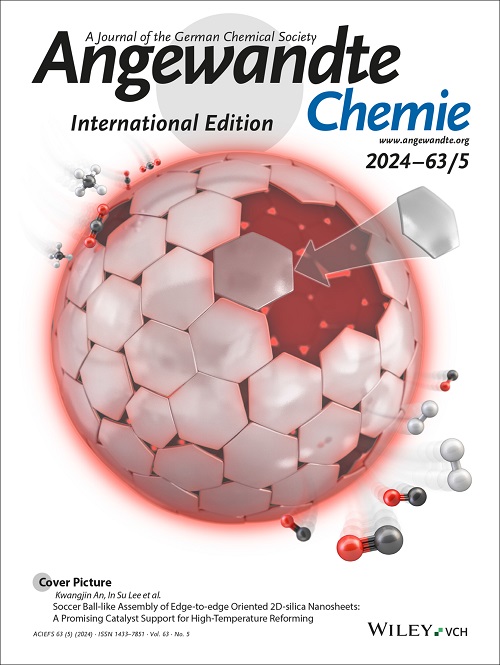Catch, Cut, or Block? – Versatile 4‐N‐Derivatized Sialyl Glycosides for Influenza Virus Neuraminidase Detection and Purification
IF 16.1
1区 化学
Q1 CHEMISTRY, MULTIDISCIPLINARY
引用次数: 0
Abstract
Seasonal influenza continues to threaten human lives and pose a significant burden to healthcare systems and the economy, emphasizing the need for developing better influenza vaccines, diagnostics, and anti‐viral therapeutics. To address these challenges, we generated a library of structurally diverse sialyl glycosides containing 4‐N‐derivatized sialic acids by a highly efficient one‐pot two‐enzyme chemoenzymatic sialylation strategy. Sialosides containing 4‐azido‐substituted sialic acid were selectively cleaved by sialidases from influenza viruses, whereas sialosides containing 4‐acetamido‐modified sialic acid were resistant to sialidase cleavage. Interestingly, sialosides containing 4‐amino‐ or 4‐guanidino‐substituted sialic acid were effective inhibitors moderately or highly resistant to cleavage by influenza sialidases (also called neuraminidases). The sialosides containing the 4‐guanidino‐substituted sialic acid represent a new class of sialidase substrate analog‐based inhibitors. We took advantage of this unique property to create a ligand‐based approach for efficiently isolating influenza virions from egg allantoic fluid with high purity. Together, these compounds are versatile probes and ligands for developing new approaches to detect, profile, isolate, and characterize influenza viruses via neuraminidases on their surface.求助全文
约1分钟内获得全文
求助全文
来源期刊
CiteScore
26.60
自引率
6.60%
发文量
3549
审稿时长
1.5 months
期刊介绍:
Angewandte Chemie, a journal of the German Chemical Society (GDCh), maintains a leading position among scholarly journals in general chemistry with an impressive Impact Factor of 16.6 (2022 Journal Citation Reports, Clarivate, 2023). Published weekly in a reader-friendly format, it features new articles almost every day. Established in 1887, Angewandte Chemie is a prominent chemistry journal, offering a dynamic blend of Review-type articles, Highlights, Communications, and Research Articles on a weekly basis, making it unique in the field.

 求助内容:
求助内容: 应助结果提醒方式:
应助结果提醒方式:


